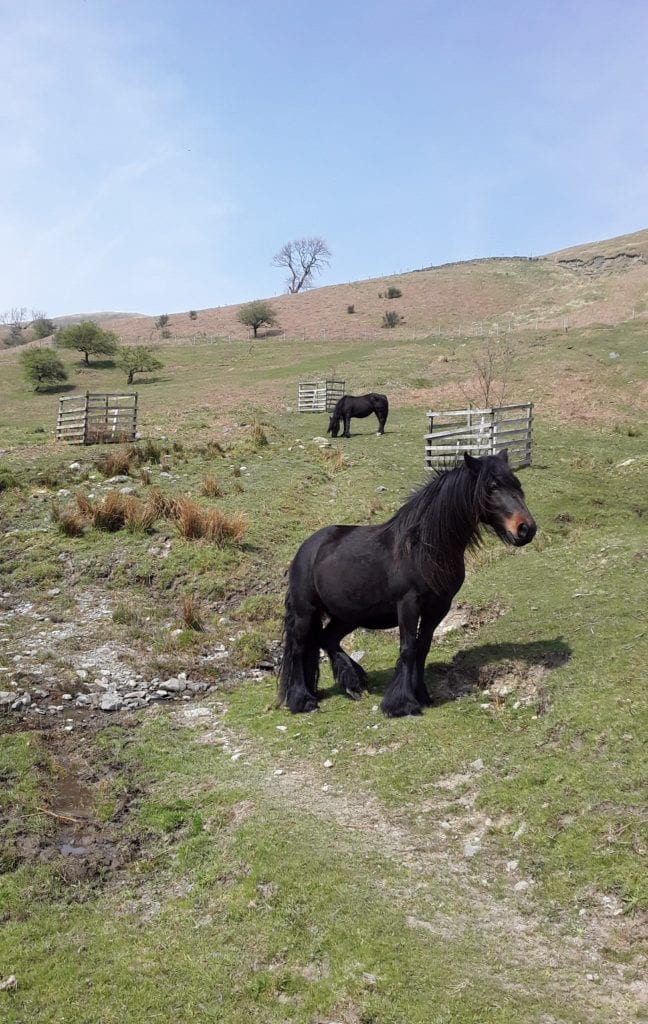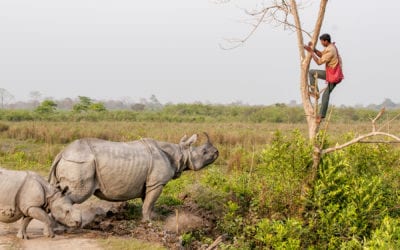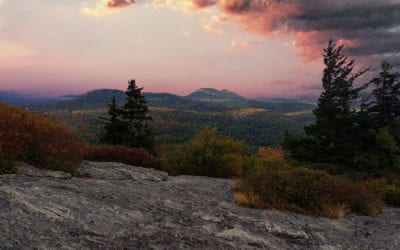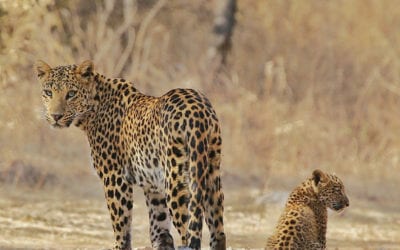Fell ponies of Cumbria. Photo credit: the Fell Ponies Heritage Centre.
The English Lake District: A Culturally Wild Landscape
International Perspectives
August 2019 | Volume 25, Number 2
From the reintroduction of lynx and ospreys to taxing the tourists, the English Lake District is at the center of various debates on the protection of natural and cultural heritage and wildlife. It is a precious landscape, which became a UNESCO World Heritage Site in 2017 under the category of cultural landscape. It is also a very popular national park and destination for millions of tourists, putting pressure on its wildlife and cultural heritage. Contrary to this, there are initiatives to rewild the region through the introduction of native species and returning some of the valleys to their natural condition, including the famous case of the Wild Ennerdale project, which aims to return the Ennerdale Valley to its natural and wilder state by leaving the area free from humans control and intervention (Wild Ennerdale Stewardship Plan 2006).
The region’s cultural heritage and the rewilding efforts seem to oppose each other: the first is the symbol of an iconic farming industry whereas the second aims at saving the region’s primeval and original inhabitants – its wildlife. This article will search for an answer to the dilemma of the English Lake District by asking whether a cultural landscape can be at the same time a wild one. Or to put it more simply: Can cultural elements be part of a landscape’s wildness?
The English Lake District: From Picturesque to Tourist Landscape
The English Lake District is considered one of the most beautiful and popular regions of the United Kingdom. It is visited by approximately 20 million tourists annually and inhabited by 41,000 permanent residents (Lake District National Park 2018). At first glance, it looks like a sublime, timeless, and unchanging landscape (Anderson 2008; Whyte 2002). However, as shown by previous research, the area is a contested landscape that contains hidden tensions between diverse actors, such as the farming and tourism sectors, the insiders and outsiders, and the conservationists and profit seekers (Whyte 2002). Also, the Lake District is more than a tourist destination or a beautiful place for recreation. It is historically, culturally, and naturally a hybrid landscape where diverse histories, cultures, and geographies meet. As explained by Urry, it does not have a static meaning. Its meaning has changed over centuries as different groups of people have seen it differently (Urry 1995).
Since the 18th century, the Lake District’s meaning started form around a beautiful concept as a result of the Picturesque and then Romantic movements that made it home to many poets, novelists, and painters. Due to the increasing attention of artists and the upper classes seeking refuge and holiday destinations, the area became a tourist hub in the early 19th century. However, it is also where conservation and protection of the natural and cultural landscape began with the efforts of people such as Canon Hardwicke Rawnsley and Beatrix Potter. Their efforts were transformed into a broader protection movement, and in 1951, it became England’s second and largest national park. In 2017, it was declared a World Heritage Site by UNESCO under the category of cultural landscape, bringing debates on the protection of this vulnerable landscape, and finding the balance between the local culture, heritage, and the tourist industry.
The Dilemma: Wildness versus Culture
The Lake District is not a landscape primarily regarded as wild, since its wildness looks like something introduced and promoted for outsiders – mainly the tourists. For example, the Predator Experience located in the South Lakes offers people with the opportunity of walking with wolf hybrids (Predator Experience 2019)(http://www.predatorexperience.co.uk/). Also, as its UNESCO status of cultural landscape demonstrates, the Lake District is one that has been shaped by hill farming for millennia. In this context, it seems easier to compare the Lake District with other cultural landscapes (historical, industrial, etc.), which are known for their human-made features (towns, historic buildings, or particular industries).
This situation also creates a dilemma: on the one hand, the area is appraised for its beauty and local industries, the things that make it a cultural landscape. On the other hand, these cultural aspects and industries are regarded as having made the region a sheep-wrecked landscape without wildlife or wilderness (Monbiot 2013; 2017). As a result, the area experiences growing tensions between hill farming, which damages the local wildlife, and those trying to rewild the region through introduction of wilder species (Glover 2014; Sawer 2017).
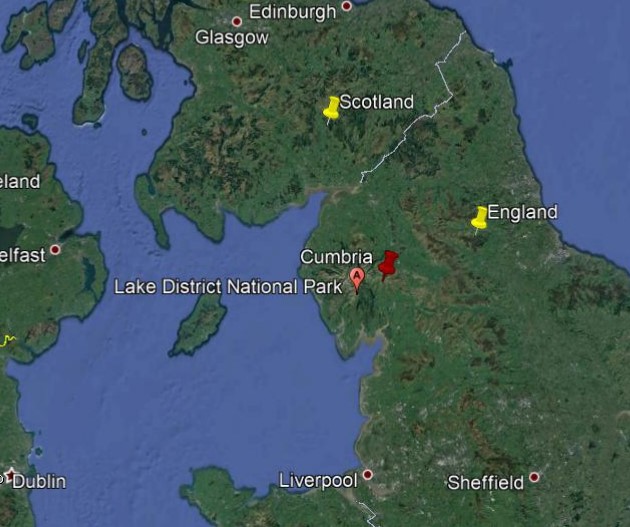
Figure 1 – The map of the Lake District within the county of Cumbria, located between England and Scotland. ©2018 Google LLC, used with permission. Google and the Google logo are registered trademarks of Google LLC.
From Measurable to Perceived, from Physical to Cultural: Different Forms of Wildness
Wilderness usually refers to a pristine landscape unchanged by people. According to the Oxford Advanced Learners’ Dictionary, “wild” (scenery/land) means “in its natural state, not changed by people,” while “wilderness” is “a large area of land that has never been developed or used for growing crops because it is difficult to live there” (2000, 1541). However, from the Arctic to the urban habitat, all places across the world are changed by people to a certain degree, and in the United Kingdom, human influence has led to the absence of “true” wilderness (Carver, Evans, and Fritz 2002; Adams 2003; Mansfield 2014; Pheasant and Watts 2015). The lack of true wilderness led to the separation of “wilderness” and “wildness” (Carver, Comber, McMorran, and Nutter 2012; Adams 2003). Whereas wilderness refers to a landscape unaltered by humans, wildness corresponds to a softer version of it, referring to the degrees or nuances of wilderness. As an example, in their research on mapping wilderness, Carver and Fritz (1998) argue that the UK does not have absolute wilderness areas such as Greenland, Antarctica, or North America, and its remaining wilderness is subject to commodification due to tourist industry as seen, for example, in the Scottish Highlands.
However, wilderness or wildness are not only defined or measured by objective approaches. Instead, wilderness (or wildness) is also a socially constructed realm that can be defined or measured by subjective approaches (Grossberg 1999; Jepson and Sharpley 2014). For social constructivists, wilderness depends on the perception of the observer (Grossberg 1999, p. 1). The definition of wilderness has changed over time or according to context, culture, or individuals (Grossberg 1999, p. 2). Also, the value given to the wilderness changed over time. As an example, Romanticism was a turning point in assessing landscapes, and the Lake District, known as a “wild and desolate” landscape, was considered to have scenic value beginning with the Romantic movement (Jepson 2013).
Wilderness and wildness are mainly assessed by the physical characteristics of a landscape, including its geography, wildlife, ruggedness, remoteness, and so forth, and how these characteristics affect human perception. Most of the research in the areas of human geography, environmental psychology, and tourism studies analyze the human perception of a landscape and measure the degree of wildness (Carver and Fritz 1998; Carver, Comer, McMorran, and Nutter 2012). As an example, Carver and Fritz argue that wilderness also depends on personal experience and perception, not only on measurable standards. They propose a more flexible approach to map and monitor wilderness that contains both quantifiable and individual measures. Based on Nash’s “wilderness continuum” concept, which seeks to measure the degree of wilderness from the paved to the primeval, they used GIS techniques to measure the wilderness based on people’s perception of the landscape (Carver and Fritz 1998).
This article proposes a more comprehensive understanding of “wild” in discussing the symbolic-cultural elements of the Lake District and argues that wildness is not something entirely physical; instead, wildness consists of physical and cultural/ symbolic elements that can be measured through both objective and subjective approaches. First, wild does not only correspond to a physical landscape but also to the specific local culture and people, autonomous from any political, religious, or economic constraints of the current period. “Local people” refers to people who have had connections to that particular geography for at least several generations, and even if they do not live there permanently, they still keep their connections there. Wild also refers to a hidden symbolic landscape consisting of haunted sites and buildings, local lore, and legends that create an aura of mystery around that particular landscape segregating it from the rest. Second, cultural wildness is also a positive concept that does not mean a culture of wildness or a wild culture, such as when evaluating foreign cultures (or “social other”) as backward, illiterate, uncivilized, and so on. It does not refer to the hierarchy and inequality between the “civilized” and “uncivilized” or a negative understanding of “wild” (criminals, illiterate, backward, etc.). Instead, cultural wildness corresponds to specific cultural practices and relative autonomy from a broader social, political, and economic framework. By defining it in this way, this article proposes a lens through which to assess the wildness of a landscape – mainly cultural landscapes such as the Lake District, which can be included in future research.
Describing Cultural Wildness
Historically, Cumbria, the county where the Lake District is located, was known as a wild part of England (Carruthers 1979). Its people were considered to be outlaws. The region also became a refuge for those who sought a safe and secret place to hide from the army, the state, or religious authorities (Bates 1907; Carruthers 1979; Marshall 1981). The local inhabitants were called “Men of the North” (or Northern Welsh), and were isolated from the rest of the country (Carruthers 1979). The region was relatively autonomous from religious and political authorities, mainly London, so there weren’t many landed aristocracy (Wordsworth 2004; Marshall 1981; Urry 1995). Instead, small-scale independent farmers (yeomen) shaped its famous landscape. Politically, it was a liminal landscape that experienced turmoil resulting from disputes between England and Scotland; the area near the borders between the two sides was once called “debatable lands.” These provided the area with an outlaw, deviant, and even irreligious identity (Marshall 1981). The area’s segregation from the rest of the country is mentioned in earlier studies, including Parker, who describes Cumbria as a country in itself (Parker 1977).
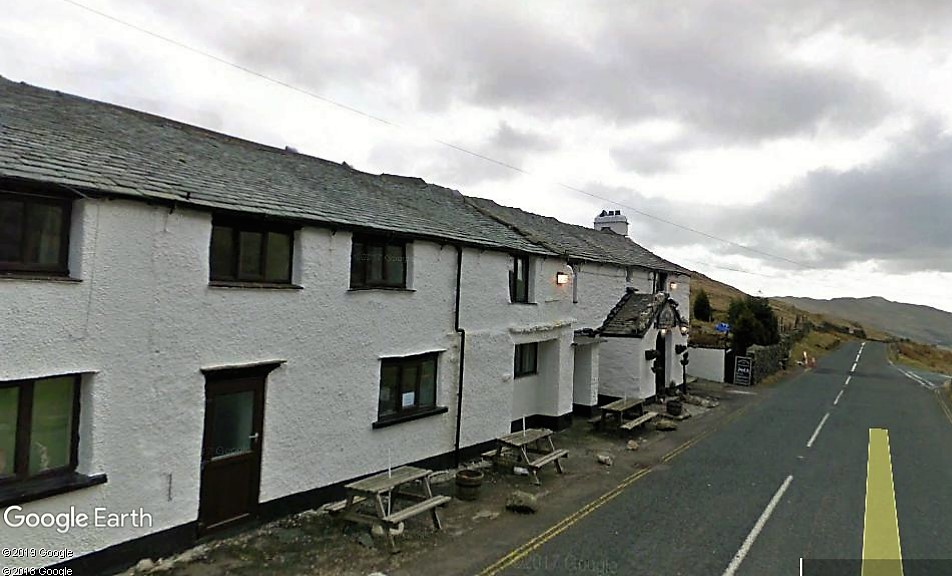
Figure 2 – The Kirkstone Pass Inn, famous for its ghosts, is located in the haunted Lake District. ©2018 Google LLC, used with permission. Google and the Google logo are registered trademarks of Google LLC.
At present, the Lake District can be regarded culturally wild based on several factors. First, its landscape has been shaped by hill farming making the region a quasi-semi-autonomous realm separate from England. As argued by Olwig, the area can be regarded as a “body politic” formed by local farmers and communities around hill farming, which historically provided it with a strong identity tied to the North Atlantic Archipelago, rather than to England (Olwig 2018). The Lake District also has the largest amount of commons, which separates the region from the rest of the country. Olwig argues that hefting and other farming practices created a strong place identity as well as a Christian pastoral community ideal, which still survive against the private property–bound culture of England (Olwig 2018). The Lake Districts hill farming does not only create “cultural wildness” with its relatively autonomous culture and specific local practices. Hill farming also, as explained by Mansfield, might have had an indirect impact on the provision and protection of wildlife in the area’s uplands (Mansfield 2014).
Second, the Lake District is culturally wild because of its haunted landscape shaped by local lore and stories about the ghosts, fairies, elves, and other supernatural creatures, standing in stark contrast to its beautiful and manufactured surface. The haunted landscape consists of two elements. First, there are haunted sites that are supposed to be ghostly (hosting ghosts of the people who lived or worked and died there). Second, there are sites that are supposed to be inhabited by supernatural beings such as fairies or elves hiding from humans. They live in a hidden landscape and show themselves only to the lucky few. The district has various sites associated with elves or ghosts, such as Kirkstone Pass Inn located between Ambleside and Ullswater (Kirkup 2011) (Figure 2). All these make the Lake District a culturally wild landscape, full of mysterious and dangerous sites which help survive the local culture, myths, and heritage. They also make the area a mysterious site which cannot be discovered by modern science and people. These stories and ghostly beings push people to search more, an experience like the exploration of the wild (or unknown).
Fell Ponies: Where Wildlife Meets Culture
Some of the Lake District’s species have a dual role: On the one hand, they are regarded as parts of the area’s wildlife. On the other hand, they may have had essential roles in creating cultural heritage. Of these species, fell ponies deserve particular attention, as they are under threat of extinction. There are approximately 500 to 900 fell ponies in Cumbria considered “under threat” (Rare Breeds Survival Trust 2011) and are regarded as wild or semiwild (they are raised and bred by local farmers, but live on their own). There are various efforts to preserve fell ponies in Cumbria. According to independent researcher David Murray, they are not only essential parts of Cumbria’s biodiversity but also its cultural and historical heritage (Murray 2011). He argues that the ancestors of contemporary fell ponies worked in the construction of the Hadrian’s Wall, and since then, they worked in farming and agriculture, coal mines, and transportation. However, by the introduction of newer vehicles, the use of hill ponies has been reduced. From the mid-20th century onward, they have been used in outdoor activities and sports such as riding and trekking (Murray 2011). The case of fell ponies demonstrates how wildlife intermingles with the cultural heritage of a landscape. In the Lake District, wildlife and culture do not oppose each other. Instead, they complete and contribute to the survival of each other.

Figures 3 and 4 – Fell ponies bring together wildness and culture. They also demonstrate the difference between perceived and measurable wildness: while people might not perceive them as wild (as a result of their small bodies or cuteness), scientists regard them semiferal or feral animals that are under threat. Thanks to Mrs. Robinson from Fell Ponies Heritage Centre for providing in-depth information on the fell ponies of Cumbria.
English Lake District: A Positively Wild Landscape
The Lake District is an iconic cultural landscape built around hill farming. However, as demonstrated here, it is also a culturally wild landscape as a result of its relative political, religious, and cultural autonomy from the rest of the country. As discussed, the Lake District is rich in local lore and sites haunted by ghosts and supernatural beings. In this landscape, wildlife looks more like tamed animals and may not be regarded as wild as the wolf, bear, bison, or lion. Still, the Lake District’s wildlife intermingles with this harsh landscape. Its fell ponies are not only part of its wildlife but also its cultural heritage.
Cultural wildness as proposed here for the Lake District demonstrates three things. First, “wildness” is a flexible term that includes both physical and cultural elements. In the case of the Lake District, cultural wildness refers to relative autonomy from religious, political, and economic contexts as well as a heritage formed around hill farming and associated built environment and culture. And, of course, cultural wildness also consists of haunted sites and local legends. Second, this cultural wildness does not suggest that the region is in a subordinate position to the rest of the country. Its rural culture, local people, and mystery are not the symbols of underdevelopment, poverty, conservatism, or superstition. They do not stand in contrast to science, innovation, or modernism that usually is associated with urban landscapes and culture. Instead, the Lake District, with its culture and local people, can be considered wild in a positive sense, reflecting a relatively unspoiled landscape autonomous from capitalism and its intrusive logic. This wildness demonstrates the power of being and living on its own, and going “wild” not only in nature but also in the self.
Finally, this cultural wildness is not in opposition to the physical wildness. Instead, as demonstrated by the case of fell ponies, wildlife of the Lake District intermingles with the local culture and historic heritage. This demonstrates the relationship between cultural and physical wildness, which is not a zero-sum game in which one loses while the other wins. Instead, culture and wildlife are parts of the same landscape. This illustrates that in the future, cultural elements should also be included in research on wildness. As shown in research conducted in Portugal, Germano and others argue that unused mines can also create suitable habitats for birds and lead to an overall increase in the avifauna diversity of the region (Germano et al. 2016). The same can be applied to the Lake District: human-made elements such as quarries, unused mines, or other abandoned sites can increase the overall amount of wildlife, demonstrating an indirect impact of cultural elements on physical wildness. In this context, unused quarries and mines in the Lake District, particularly those located in the fells, should be investigated regarding their overall impact on the number and diversity of the wildlife.
The conceptualization of wildness proposed here extends the notion of protected landscapes such as the Lake District. It can address the various threats to these landscapes that led to tensions between multiple actors. Sometimes the reliance upon one characterization of wildness (physical) might lead to the neglect of other essential features. However, when one considers multiple conceptualizations of wildness, landscapes such as the Lake District can be better protected.
The Lake District is a mix of physical and cultural wildness that creates a sense of wonder with its fells, lakes, wildlife, and harsh weather. It is rich in legends, haunted sites, and a local culture, unspoiled for many millennia. While the concept of wildness proposed here is different from the one promoted in the region by tourism industry, it is an important and necessary progression. If we accept multiple conceptualizations of a wild landscape, we have the opportunity to represent and protect diverse and unique cultural landscapes across the globe.
BASAK TANULKU is an independent scholar from Istanbul, Turkey, and holds a PhD in sociology from Lancaster University, UK. She focuses on different urban issues, mainly sociospatial fragmentation, gated communities, housing, urban activism, and alternative spaces; email: tanulkub@gmail.com.
References
References
Adams, W. 2003. Wilderness: England’s English. Wilderness Babel, Virtual Exhibitions, No. 1. Retrieved from http://www.environmentandsociety.org/exhibitions/wilderness/wilderness-englands-english.
Anderson, B. 2008. Doreen Massey ‘for space’ (2005). In Key Texts in Human Geography, ed. P. Hubbard, G. Valentine, and R. Kitchin (pp. 227–236). London: Sage.Bates, K. L. 1907. From Gretna Green to Land’s End: A Literary Journey in England. New York: Thomas Y. Crowell & Co.
Carruthers, F. J. 1979. People Called Cumbri. London: Robert Hale.
Carver, S., and S. Fritz. 1998. Mapping the wilderness continuum. Retrieved from http://www.geog.leeds.ac.uk/papers/98-8/.
Carver, S., A. Evans, and S. Fritz, S. 2002. Wilderness attribute mapping in the United Kingdom. International Journal of Wilderness 8(1): 24-29.
Carver, S., A. Comber, R. McMorran, and S. Nutter. 2012. A GIS model for mapping spatial patterns and distribution of wild land in Scotland. Landscape and Urban Planning 104: 395-409.
Germano, D., R. Machado, S. Godinho, and P. Santos. 2016. The impact of abandoned/disused marble quarries on avifauna in the anticline of Estremoz, Portugal: Does quarrying add to landscape biodiversity? Landscape Research 41(8): 880–891.
Glover, M. 2014. Like a lamb to the slaughter: Environmentalist attacks ‘ecological disaster’ of sheep-rearing at hill farmers’ meeting – and is met with stony silence. The Independent, March 9.
Grossberg, A. R. 1999. Changing landscape perceptions and the meaning of wilderness: Visitors’ belief about a national park. Master of science thesis, University of Wisconsin–Madison.
Jepson, D. 2013. An exploration of the relationship between contemporary spirituality, the physically active rural tourist and the geography of place: A case study of the Lake District, PhD thesis, University of Central Lancashire, UK.
Jepson, D., and R. Sharpley. 2014. More than sense of place? Exploring the emotional dimension of rural tourism experiences. Journal of Sustainable Tourism 23(8/9): 1157–1178.
Kirkup, R. 2011. Ghostly Cumbria. Stroud, UK: History Press Limited.
Lake District National Park. 2018. Facts about local population and housing and tourism. Retrieved from http://www.lakedistrict.gov.uk/learning/factsandfigures.
Mansfield, L. 2014. Upland farming and wilding. Ecos 35(3/4): 15–22.
Marshall, J. 1981. Portrait of Cumbria. London: Robert Hale.
Monbiot, G. 2013. The Lake District is a wildlife desert. Blame Wordsworth. The Guardian, September 2.
———. 2017. The Lake District as a World Heritage Site? What a disaster that would be. The Guardian,. May 9.
Murray, D. 2011. Brief notes on the historical uses of Fell ponies.Retrieved from http://www.shadow-of-the-wall.co.uk/history_of_fell_ponies.html.
Olwig, K. 2018. England’s ‘Lake District’ and the ‘North Atlantic Archipelago’: A body of managed land contra a body politic. Landscape Research 43(8): 1032–1044.
Oxford Advanced Learners’ Dictionary. 2000, 6th ed., ed. Sarah Wehmeier. Oxford and New York: Oxford University Press.
Parker, J. 1977. Cumbria: A Guide to the Lake District and Its County. New York: Harper Collins.
Pheasant, J. R., and Watts, R. G. 2015. Towards predicting wildness in the United Kingdom. Landscape and Urban Planning 133: 87–97.
Predator experience. 2019. Retrieved from http://www.predatorexperience.co.uk/.
Rare Breeds Survival Trust. 2011. Equine watchlist. Retrieved from https://www.rbst.org.uk/Pages/Category/equine-watchlist.
Sawer, P. 2017. Clashing visions over future of Lake District after World Heritage Status award. The Telegraph, July 23.
Urry, J. 1995. The making of the Lake District. In Consuming Places (pp. 193–210). London and New York: Routledge.
Whyte, I. 2002. Whose Lake District? Contested landscape and changing sense of place. North West Geography 2(2): 1–11.
Wild Ennerdale Stewardship Plan. 2006. Stewardship plan text. The Wild Ennerdale Partnership. Retrieved from http://www.wildennerdale.co.uk/wordpress/wp-content/uploads/2013/02/Stewardship-Plan-Text.pdf.
Wordsworth, W. 2004. A Guide to the Lakes, with a new Preface by Stephen Gill. London: Frances Lincoln LTD.
Read Next
WILD11 India: Nature-Based Solutions for Life, Livelihoods, and Love
We are pleased to tell you that the 11th World Wilderness Congress (WWC WILD11) will convene in Jaipur, India, in March 2020.
The Historical Meaning of “Outstanding Opportunities for Solitude or a Primitive and Unconfined Type of Recreation” in the Wilderness Act of 1964
The federal land management agencies responsible for wilderness stewardship in the United States play a critical role in fulfilling the Wilderness Act’s mandate to preserve wilderness character.
Jhalana: The Abode of the Urban Leopards
Imagine living in a crowded city of 3.1 million people and learning that amidst this human world, the huge buildings, the maddening crowd, and the deafening sounds lies a small, happy, and peaceful refuge where wild leopards rule.

